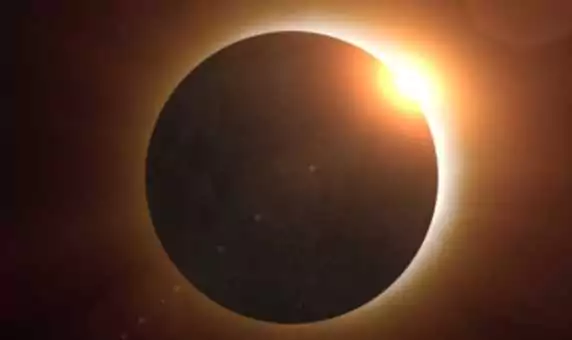As the world prepares for the culmination of Ramadan and the joyous celebration of Eid ul Fitr, a celestial event is poised to influence the traditional sighting of the Shawwal moon.
The eagerly anticipated Total Solar Eclipse slated for April 8, 2024, is forecasted to impact the visibility of the moon crucial for marking the beginning of Shawwal, a key determinant for Eid ul Fitr celebrations among Muslims worldwide.
Traditionally, the sighting of the moon serves as the decisive factor in commencing and concluding Ramadan, the sacred month of fasting observed by Muslims globally. This sighting occurs when the moon positions itself between the Earth and the Sun, allowing light to illuminate its far side. However, the forthcoming solar eclipse threatens to disrupt this customary practice, leading to potential adjustments in the timing of these religious observances.
Throughout Ramadan, Muslims adhere to the rigorous practice of abstaining from food and drink from sunrise to sunset, engaging in spiritual reflection and devotion. This year, the conclusion of Ramadan and the commencement of Eid ul Fitr will not align with the sighting of the new moon, marking a departure from tradition.
On April 8, individuals in North America will have the opportunity to witness the silhouette of the new moon through specialized eclipse glasses. However, the full eclipse will only be observable along a narrow path of totality spanning 115 miles in width, limiting visibility to specific regions.
The Total Solar Eclipse on April 8 is anticipated to impact the visibility of the Shawwal crescent moon, which is crucial for determining the onset of Eid ul Fitr. Initial forecasts suggested that April 9 would mark the first day of Eid al-Fitr. However, the eclipse’s effect on the visibility of the new moon, particularly near the western horizon after sunset on April 8, complicates this prediction.
As a consequence, many Islamic nations are expected to witness the crescent moon after sunset on April 9, prompting a shift in the anticipated date for Eid ul Fitr. According to reports from Harper’s Bazaar Arabia, April 10 is now being considered as the probable first day of Shawwal and Eid al-Fitr festivities, reflecting the adjustments necessitated by the celestial event.
The impending Total Solar Eclipse serves as a reminder of the profound interconnectedness between celestial phenomena and cultural practices, underscoring the adaptability and resilience of religious traditions in the face of natural occurrences. As Muslims around the world prepare to bid farewell to Ramadan and usher in Eid ul Fitr, the eclipse-induced alterations highlight the significance of flexibility and interpretation within religious observances amidst changing cosmic alignments.
